- Do I love this book?
- Will I reread it?
- Is it sentimental or hard to find through the library?
- Can I use it to teach (as an example to others in a one of my workshops) or learn (for myself as a mentor text)?
How do you organize your shelves?
|
During my latest home organization efforts, I saved the hardest category for last: books. For many people (especially writers!), the idea of getting rid of books is a difficult subject. In early 2019, there was even a Marie Kondo controversy about the idea of limiting the number of books in your home. Can we really have too many books? According to "Why You Should Surround Yourself With More Books Than You'll Ever Have Time To Read", no. But there came a point when my shelves were overcrowded, and I bought multiples of the same book because I didn’t know I already owned a copy. It was time to clear some out. The criteria I used during my office cleaning:
Many organizations accept used books, so they’re relatively easy to donate. You can also organize a swap event with book-loving friends. (We once hosted a children’s party where each kid brought a few books and they took turns picking “new” ones. They even decorated bags to carry their treasures home.) Sorting through hundreds of books can be a tough process. But now that I’ve finished, I’m happy to have some space on my shelves for new stories. And while I admire shelves arranged by color, I use categories like young adult, middle grade, adult nonfiction, or even narrative POV (see below). When I finished, I treated myself to this fun bookend: What criteria do you use to donate books?
How do you organize your shelves? NaNoWriMo stands for National Novel Writing Month, and it's a time that creatives come together with the common goal of writing 50K words during the month. This leads to the monthly IWSG blog hop question: 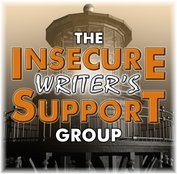 Have you ever participated in National Novel Writing Month? If not, why not? Thank you to Alex Cavanaugh for founding the Insecure Writers Support Group, and to this month’s co-hosts, Diedre Knight, Douglas Thomas Greening, Nick Wilford, and Diane Burton. 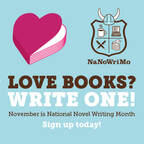 I've participated in NaNoWriMo several times. It's great to feel a sense of community while writing, knowing that so many others are tapping into their creativity, too. I even served as a coach in 2020 and shared five organizational tips to help during November. This year, rather than track my wordcount, I'm going to track my revision hours. If you're interested in using NaNoWriMo for a project other than 50K novel words, check out So You're A NaNoWriMo Revision Rebel by Becca Spence Dobias or How to Break the Rules for the Best NaNoWriMo Ever by Sue Weems. Both articles provide ideas for making the month work best for you. For more inspiration, check out these pep talks on the NaNoWriMo site. Whether it's words in a new novel, creating a series of smaller projects, or revising an existing draft, there's still time to join the NaNoWriMo community and crush your creative goals. Wishing you a productive November!
Special thanks to Kathy Fork for sharing some productivity tips for writers in her guest post, below. Stick To It With Stickers! By Kathy Fork 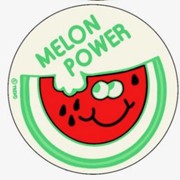 As a kid during the 1980s, I fell hard for stickermania. I filled my sticker albums with Mrs. Grossman’s teddy bears, sparkly unicorns, puffy penguins, and my favorite scratch & sniff…Melon Power! While I was working on an MFA in Writing during the first two years of the pandemic, I often wished for more melon power. I wondered where all the discipline and energy of my youth had disappeared to. I’d started the MFA, in part, to motivate myself to write more. But despite my best intentions, I often found myself procrastinating and cramming before deadlines. So much so, that my critical thesis topic focused on procrastination and creating a writing ritual…ha! During my research I discovered a lot about creating good habits. One of my favorite productivity tips came from a surprising source…Jerry Seinfeld. Seinfeld told an aspiring comic that to get better, he should write jokes every day. For each day he wrote jokes, he was to mark a big red X on a calendar taped to the wall. As those Xs added up, a chain would appear. “Don’t break the chain!” Seinfeld advised. 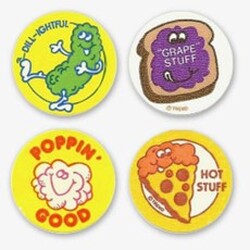 I love this method because I’ve found it both simple and effective. Once I’ve set a goal and committed to it for a few days, I really don’t want to break my chain. I’ve used it successfully with diet, exercise, and oh yes, writing. My little twist is to print out free calendars or charts from the internet and then fill them with stickers instead of Xs. I put the chart on my fridge where I can’t avoid seeing it. When I complete my goal for the day, I get a little burst of joy and satisfaction from adding a sticker. It seems like such a small thing, but I’ve found it to be a compelling motivator. Such is the power of the streak (and my inner 80s kid feels like hot stuff)! 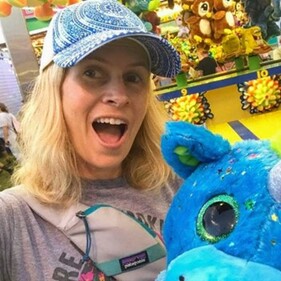 More About Kathy: Kathy Fork grew up in the suburban wilds of New Jersey in an old colonial farmhouse where she whiled away many hours reading, drawing, and organizing her sticker collection. A former teacher and school librarian, she recently graduated from the Vermont College of Fine Arts with an MFA in Writing for Children and Young Adults. Kathy currently resides in California with a sticker-loving teen and two spoiled dogs. When she isn’t procrastinating, Kathy writes picture book manuscripts and poetry. 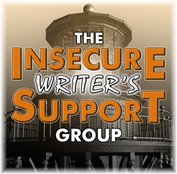 Every month, the Insecure Writers Support Group hosts a blog hop with an optional question. Special thanks to Alex Cavanaugh and to this month’s co-hosts, Tonja Drecker, Victoria Marie Lees, Mary Aalgaard, and Sandra Cox. This month's optional question: What do you consider the best characteristics of your favorite genre? (Feel free to share your favorite genre in the comments!) Rather than ponder this month’s question, I’d instead like to point blog-hoppers to my most recent post: an interview with productivity expert Laura Vanderkam, who shares advice especially geared to creative people. I hope you find her information as useful as I did. Happy October!
I'm excited to share this special interview with productivity expert Laura Vanderkam. I've been a fan since I read 168 Hours: You Have More Time Than You Think. Her latest book, Tranquility by Tuesday, is currently available for pre-order. Read on for my interview questions and Laura's productivity advice for creatives. 1. Some of your advice (tracking time, setting a bedtime) is applicable to all kinds of professions. What productivity advice would you offer creative people that might differ from other types of pursuits? One of my goals with Tranquility by Tuesday was to highlight time management strategies that would be helpful to just about anyone. They might be more useful to people who are in what I call the “busy years” (building a career, raising a family) but most of the rules work for many stages of life, and for many professions. As for creative professions? I find it helpful to realize that, if you are a working creative, then your creative work is a job like most other jobs! Indeed, we often undermine our productivity by treating creative work as somehow more fragile, or the muse as more elusive, than it is for any other job. Doing a good job at any sort of work requires time — so, whether you are writing novels or fixing cars, you need to make sure your schedule has adequate time to do your work. You need to do a lot of your work, get feedback on your work, and iterate from there. You need to set long term professional goals, and break them down into doable steps. Then you need to designate time to execute on those doable steps. You need to hold yourself accountable for meeting the goals you set for yourself. You need to network and learn from other people. You need to monitor your energy and match your toughest work to the time when you are best able to do it. You need to limit distractions. That’s true whether you’re painting, composing, choreographing, writing fiction or non-fiction…or doing anything else.
3. Any last bits of wisdom or something you wished I'd asked? I don’t have a favorite Tranquility by Tuesday rule, but one of the most helpful to me has been “Plan on Fridays.” Every Friday afternoon, I make myself a plan for the following week. I decide what I’d really like to see happen in three categories of life: career, relationships, self. I figure out where those things can go. I figure out what else needs to happen in the upcoming week, and make sure there’s something I’m really looking forward to. It sounds simple, but it really is life-changing. When you consistently plan in steps toward your big goals, you can accomplish them. And that feels incredibly rewarding! Thank you, Laura, for taking the time to share your productivity advice. Preorder Laura's upcoming book, Tranquility by Tuesday: 9 Ways to Calm the Chaos, to access special bonus materials. Want to read my previous interview with Laura? Check out V is for Vanderkam. 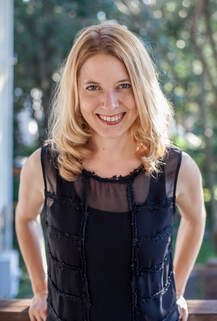 More about Laura: Laura Vanderkam is the author of several time management and productivity books, including the forthcoming Tranquility by Tuesday: 9 Ways to Calm the Chaos and Make Time for What Matters, along with Juliet’s School of Possibilities, Off the Clock, I Know How She Does It, What the Most Successful People Do Before Breakfast, and 168 Hours. Her work has appeared in publications including the New York Times, the Wall Street Journal, Fast Company, and Fortune. She is the host of the podcast Before Breakfast and the co-host, with Sarah Hart-Unger, of the podcast Best of Both Worlds. She lives outside Philadelphia with her husband and five children, and blogs at LauraVanderkam.com. From September 18th through September 24th is Banned Books Week, the American Library Association's celebration of the freedom to read. Some terminology from the ALA: "A challenge is an attempt to remove or restrict materials, based upon the objections of a person or group. A banning is the removal of those materials. Challenges do not simply involve a person expressing a point of view; rather, they are an attempt to remove material from the curriculum or library, thereby restricting the access of others." Censorship by the Numbers Top Ten Most Challenged Books of 2021 For more information, visit ALA's Banned Books Week site.
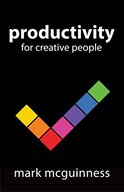 The thing about productivity for creative people is that the focus is not traditional efficiency. Of course, ideas like avoiding social media first thing in the morning and not falling for the myth of multitasking still apply. But the goal of productivity is to make the most of your creative time, and one way to do that is through the of use rituals. Using rituals can help you over the hurdle of getting started, which is often the hardest part. James Clear says that "the key to any good ritual is that it removes the need to make a decision: What should I do first? When should I do this? How should I do this? Most people never get moving because they can’t decide how to get started. Having a ritual takes that burden off your shoulders." Your starting-to-write ritual might be as simple as drinking from a distinct mug and using a special notebook. Maybe the ritual is based on location--you could move your laptop to a different place from where you pay your bills or do other non-creative work. It might also include listening to a playlist or lighting a special candle. Try combining several of these to create a unique signal to your brain that it’s time to create. In Productivity for Creative People, Mark McGuinness says to use any new rituals (or “anchors”) for at least ten days, “so that the associations become automatic . . . an easy and familiar way to slip into the creative zone and get to work.” My current ritual involves my desk, my favorite candle, and coffee, but I might change it up this month and swap typing on my laptop with writing by hand. Do you have a writing ritual? Share in the comments. :) 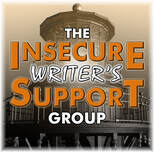 Every month, the Insecure Writers Support Group hosts a blog hop with an optional question. Special thanks to Alex Cavanaugh for creating IWSG and to this month’s co-hosts: Kim Lajevardi, Cathrina Constantine, Natalie Aguirre, Olga Godim, Michelle Wallace, and Louise - Fundy Blue. This month's question: What genre would be the worst one for you to tackle and why? Erotica would not be a good genre choice for me as a writer. My stories tend to be more PG-13. 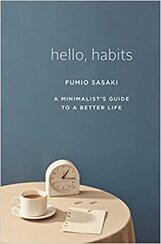 In Hello, Habits: A Minimalist's Guide to a Better Life, Fumio Sasaki synthesizes existing studies and offers fifty tips about the psychology of habit formation. One concept I found interesting was hyperbolic discounting, “the human tendency to exaggerate rewards in front of us and to minimize our estimation of rewards (and punishment) in the future, making it tough to acquire good habits.” We need to make an extra effort to set up positive habits to be kind to our future selves. :) As a single person living alone with no dependents, Sasaki certainly has latitude with structuring his creative life, but he writes with an earnestness I found compelling. Some of his tips include #6 “Examine the triggers and rewards for your habits”, #14 “Realize that hurdles are more powerful than rewards”, and #41 “Stop worrying how about how long it will take for something to become a habit” (since he dispels the 21-day assumption). A quick read, Hello, Habits is a good choice if you're learning the psychology of habits or looking for a productivity pick-me-up. “. . . those who succeed are those who don’t quit in the face of failure, and they’re the ones who continue until the end.”
~Fumio Sasaki, Hello, Habits Being productive isn’t just about getting more done. It’s about carefully choosing the activities you want to accomplish. If one of those activities is creating or improving an author newsletter, this post is for you. Newsletters are a way to directly connect with an audience who wants to hear from you. In her Email Newsletters for Authors: Get Started Guide, Jane Friedman summarizes the main newsletter benefit: “. . . email has so far proven to be a more long-term and stable tool than social media, which is constantly shifting. . . .You truly own your email list, unlike Facebook or Twitter accounts. And if you use people’s email addresses with respect . . . those addresses can become resources that grow more valuable over time.” This doesn't mean an author newsletter is the best use of your time. But if you do decide to create one, here are five steps with resources to guide you.
 Some of my favorite newsletters:
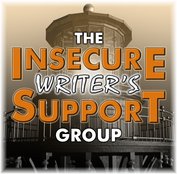 On to the IWSG Blog Hop. . . . Every month, the Insecure Writers Support Group hosts a blog hop with an optional question. I'm skipping this month's question (When you set out to write a story, do you try to be more original or do you try to give readers what they want?) but sending many thanks to founder Alex Cavanaugh and to this month’s blog co-hosts: Tara Tyler, Lisa Buie Collard, Loni Townsend, and Lee Lowery. "It is not enough to be busy, so are the ants. The question is: What are we busy about?" ~Henry David Thoreau If you have an author newsletter, drop the link in the comments. You can sign up for mine at http://tinyurl.com/yv-newsletter.
Lately, I’ve been clearing out a lot of unneeded things. I sort of follow Marie Kondo’s advice of tackling like items all at once (clothes, books, etc.) But since it's more satisfying to organize a single room or closet at a time, it’s been a bit of a hybrid approach. I was making good progress until I decided it was Time To Tackle The Paper. So much paper. My office filing cabinets have been overstuffed for years. I bought a smaller extra cabinet, even though the solution was really to get rid of the paper, not expand the storage. I’m not talking about old bills and takeout menus (although there were a few of those). I mean the kind of paper writers might accumulate, like journals of novel notes, research for books and articles, and folders from writing conference filled with driving directions, hotel receipts, and carefully handwritten notes dating back to 2002. (I know. It's bad.) In The Life-Changing Magic of Tidying Up: The Japanese Art of Decluttering and Organizing, Marie Kondo says that when sorting papers, “Rule of thumb—discard everything.” I didn’t go quite that far. But I did complete my biggest purge in decades, creating *lots* of space for future projects. I’m also making a new vow to use the scanner more. :) If you struggle with paper, too, Elizabeth Larkin's How To Get Rid of Paper Clutter Once and for All: 7 Steps to Reduce Paper Clutter might help. I found another article that featured a free printable checklist for reducing your paper clutter. Ha! I didn't print it. “When home feels out of control, no matter what the reason, unsettledness and anxiety can seep in, and then the chaos becomes internal as well as external.”
—Myquillyn Smith, Cozy Minimalist Home: More Style, Less Stuff |
JOIN NOW!
Sign up for Yvonne's newsletter for exclusive content, book news, and other occasional author goodies. Archives
March 2025
Categories
All
|